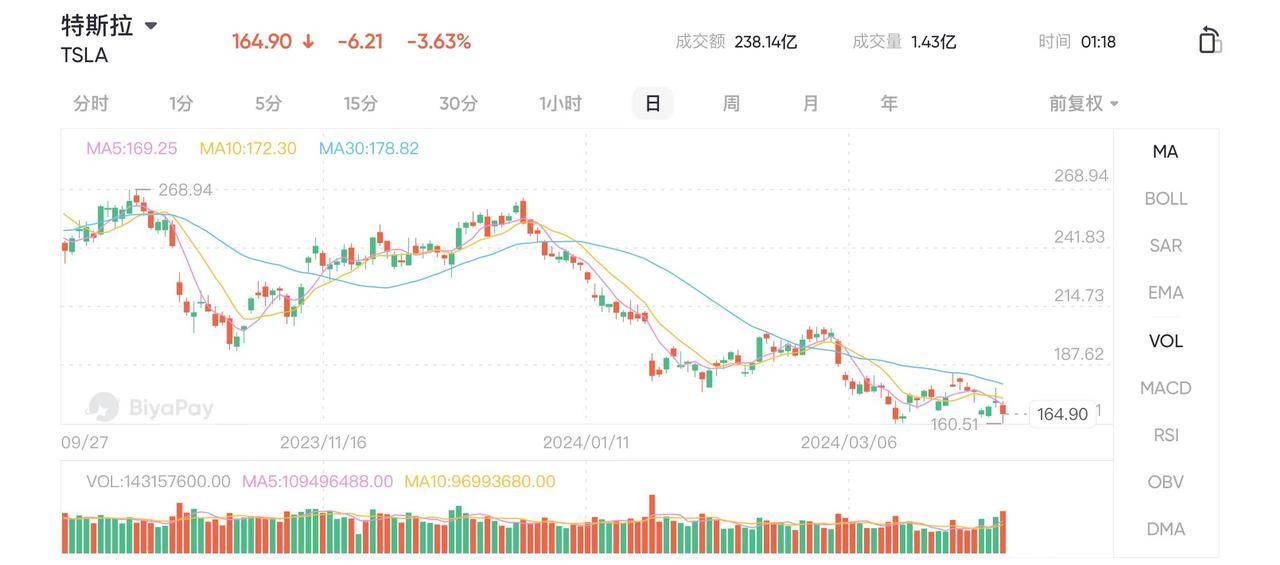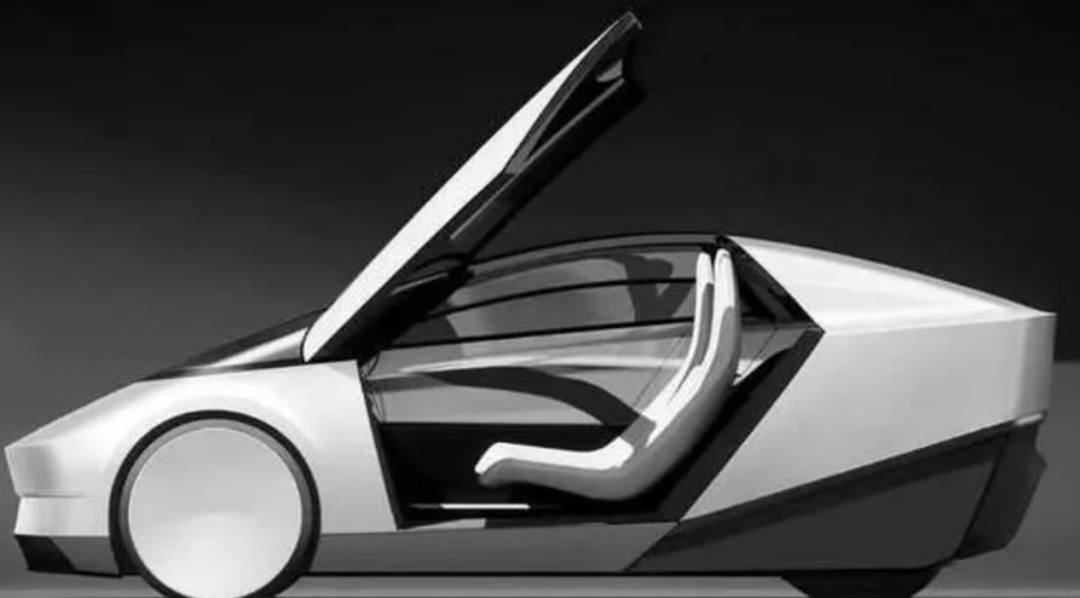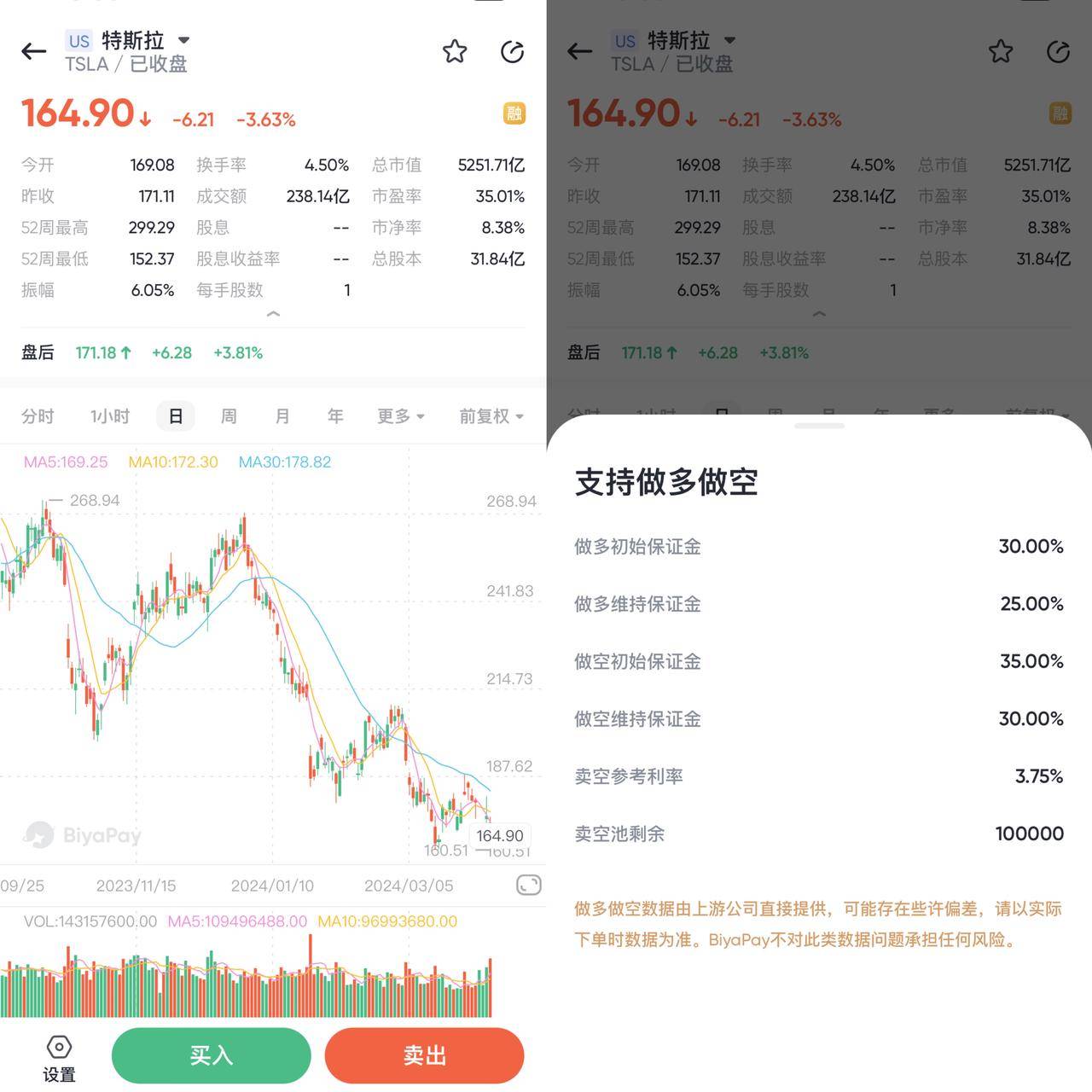- Remittance
- Exchange Rate
- Stock
- Events
- EasyCard
- More
- Download
Musk Releases Major News,Will Tesla Face a Turning Point? Can Its Market Value Double?
As the electric vehicle industry faces a slowdown in overall demand and increasing competition from other brands, Tesla has received many “negative comments” on the market.
As a global electric vehicle giant, Tesla’s performance in the first quarter of this year was nothing short of “disastrous,” with only 386,800 vehicles delivered in the quarter, falling below 400,000 for the first time since the third quarter of 2022. This result was nearly 14% lower than analysts’ expectations and a 9% decrease year-over-year.
Coupled with the declining automotive gross margin over the past few quarters, the market has raised significant doubts about Tesla’s future growth, leading to a decline in its stock price. Since the beginning of the year, Tesla’s stock price has fallen by more than 30%.

TSLA market trend, data: BiyaPay App
Therefore, to win back public trust, Musk announced a “major news” on April 5.
The autonomous taxi, Robotaxi, made a significant appearance
On April 5, Musk announced on the social media platform X: “Tesla will launch its autonomous taxi (Robotaxi) product on August 8.”

It is reported that Tesla’s Robotaxi integrates Tesla’s most advanced autonomous driving technology and design concepts, offering new possibilities for future travel.
However, coincidentally, shortly after Musk’s post, Tesla’s AI official account published the achievements Tesla has made in the past three and a half years, achieving the feat of 1 billion miles of fully autonomous driving, undoubtedly proving Tesla’s ambition in the field of autonomous driving.

In fact, car enthusiasts who have read Musk’s autobiography should be familiar with Robotaxi because he revealed the design of this concept car in his autobiography and mentioned that Robotaxi is based on the prototype of the Autopilot driving assistance system.
Initially, Musk designed Robotaxi without a clear plan for mass production, but he did not rule out the possibility that it might be produced in the future, given its significant value and potential to lead the direction of future car design.
From the exposed design drawings, Robotaxi’s appearance is striking, instantly attracting attention. Its design style is similar to Tesla’s Cybertruck, with sharp and smooth body lines, giving a sense of future technology. The vehicle’s structure is also unique, featuring a two-door layout with gull-wing doors, making it stylistically distinctive. The interior space is innovatively designed with only two seats, maximizing passenger comfort and space utilization.
Notably, the absence of traditional driving controls like steering wheels and pedals in the car indicates its fully autonomous nature. Although compact in size, the trunk space is well-designed, capable of accommodating two carry-on suitcases, meeting the basic needs of Robotaxi as an urban transport tool.
For such a concept car, many enthusiasts may be curious and expectant. If Tesla can mass-produce Robotaxi according to the concept and successfully commercialize its complete autonomous driving technology, it would be a significant breakthrough in the history of the global automotive industry.

So, what are the core technologies of Tesla’s Robotaxi? I have summarized the following three points based on available information:
1.Autopilot autonomous driving system, which uses visual perception, radar perception, ultrasonic perception, and other technologies to build a model of the surrounding environment and make real-time driving decisions.
2.FSD (Full Self-Driving) suite, which adds the ability to recognize and handle complex traffic scenarios on top of Autopilot, achieving full autonomous driving on city roads.
3.High-performance computing platform, equipped with powerful computing capabilities to support the real-time operation of the autonomous driving system.
As for the pricing model of Tesla’s Robotaxi, Tesla has not yet disclosed its specific pricing model, but it is speculated to adopt a mileage-based charging model similar to ride-hailing platforms like DiDi and Uber.
Therefore, the emergence of Tesla’s Robotaxi will undoubtedly have a significant impact on the taxi industry, with the possibility of taxi drivers losing their jobs. However, this is a trend, not an inevitability. Taxi drivers can adapt to the impact of autonomous driving technology by improving their skills and service levels and actively seeking transformation.
Tesla’s Stock Price Fluctuation and Market Reaction
Despite Tesla’s significant progress in autonomous driving technology, the market’s response has not been smooth.
This year, Tesla’s stock price has seen a significant decline, as seen in the TSLA market trend provided by the BiyaPay App, dropping from a high of $265.13 to the current $164.9, a nearly $100 decrease. This is related to factors such as poor market conditions and delivery volume reports falling short of expectations.
Against this backdrop, Musk is facing the challenge of winning a crucial “turnaround” for the company. Perhaps it is with this in mind that he chose to announce the upcoming launch of the full autonomous taxi service, Robotaxi. As a result, Tesla’s stock price rose in after-hours trading in the US stock market, showing the market’s positive reaction to this news. After all, the public has always held high expectations for autonomous driving technology, which has been an important factor supporting Tesla’s valuation.
In addition to Robotaxi, another key move by Tesla is the introduction of the more affordable Model 2, priced at an expected $25,000, aiming to attract a broader consumer base. Recently, Musk vehemently refuted media reports about Tesla’s abandonment of the low-cost model plan, calling the reports untrue. Nevertheless, his latest statements seem to imply that Tesla will prioritize the launch of the autonomous taxi service Robotaxi over the cheaper Model 2.
Is Tesla Worth Holding?
Musk has stated that the system will one day make Tesla cars very valuable.
He said during the third quarter earnings call last year: “You can imagine, every car we sell or produce with full autonomous driving capability, its future value could be five times what it is now.” Therefore, the realization of full autonomous driving is crucial for Tesla’s future, and he even stressed that if this is not achieved, Tesla’s value would significantly shrink.
Currently, through the multi-asset trading wallet BiyaPay App, Tesla’s market value is seen as $525.1 billion. Dividing by $16.5 billion, the price-to-earnings ratio is 31, slightly higher than the market average. If you want to buy at a low price, you must have a more optimistic attitude towards Tesla’s future growth, using BiyaPay to search for its code and trade online in real-time. You can also deposit digital currency (U) into BiyaPay and then withdraw fiat currency to invest in other securities.
As of now, Tesla is still worth holding. But if the valuation decreases or business unexpectedly improves, then Tesla may warrant closer examination.

In Conclusion
The upcoming debut of Tesla’s Robotaxi will undoubtedly have a profound impact on the entire travel industry. However, its progress in autonomous driving and low-cost models faces challenges and holds great opportunities. From a challenging perspective, issues like the safety of autonomous driving technology, regulatory restrictions, and consumer acceptance still need to be addressed. From an opportunities standpoint, as technology matures and the market expands, Tesla is expected to continue leading in the autonomous driving and electric vehicle sectors.
In summary, Tesla’s Robotaxi plan is exciting. It shows us the great potential of autonomous driving technology and a promising vision for future travel.
Let’s look forward to August 8th and witness this historic moment together!

























